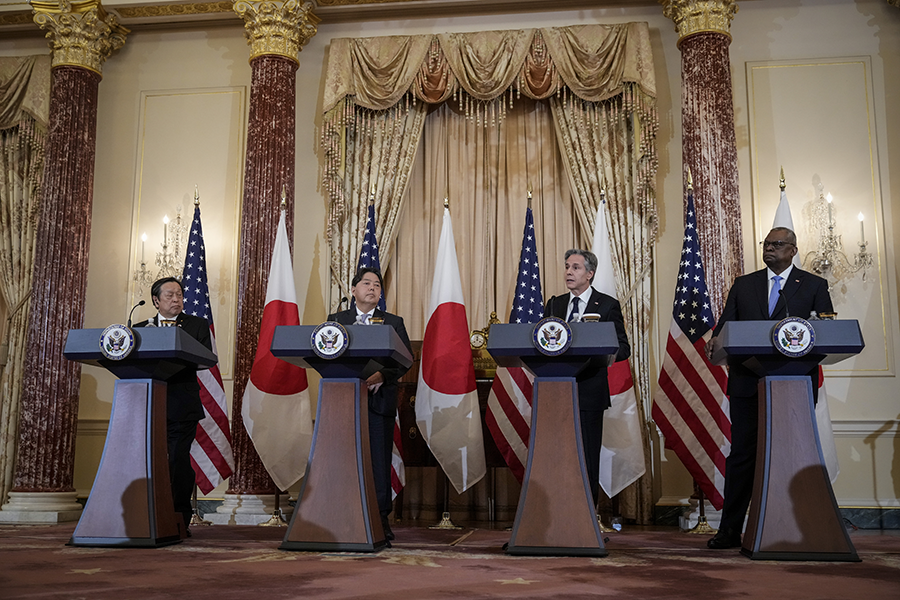Japan to Purchase U.S. Tomahawk Missiles
March 2023
By Luke Caggiano
Japan plans to purchase several hundred U.S. Tomahawk cruise missiles as the country looks to strengthen its military capabilities amid heightened tensions with China and North Korea. Japan included more than $2 billion to buy and deploy the missiles in its record-setting defense budget for its fiscal year beginning April 1, The Wall Street Journal reported on Dec. 23.
 The missiles, which can hit targets up to 1,600 kilometers away, will bring Chinese and North Korean military bases within Japanese striking range.
The missiles, which can hit targets up to 1,600 kilometers away, will bring Chinese and North Korean military bases within Japanese striking range.
Possessed exclusively by the United Kingdom and the United States, the Tomahawk system most recently saw action in 2018 when 66 missiles were used to strike chemical weapons facilities
in Syria.
Japan is expected to deploy the missiles beginning in 2026 aboard its Aegis naval destroyers. They will supplement Japan’s indigenous Type 12 surface-to-ship missile, which is currently being upgraded. The improved Type 12 missile systems are expected to be ready by 2026 and will be capable of striking sea and land targets up to 1,200 kilometers away, a significant increase from the missile’s original range of 200 kilometers.
The Tomahawk missile purchase follows the release of Japan’s new national security strategy, which highlights China as “the greatest strategic challenge in ensuring the peace and security of Japan” and assesses North Korea’s military activities as posing “a grave and imminent threat.”
With these threats as a reference, the new strategy calls for the development of a “counterstrike capability” in the event of an attack on Japan. According to the strategy, weapons such as the Tomahawk missile may be used to strike enemy missile bases “as long as it is deemed that there are no other means to defense against attack by guided missiles.”
The development of a counterstrike capability marks a significant change in the defense-oriented policy that Japan adopted following World War II.
U.S. Defense Secretary Lloyd Austin praised the planned purchase on Jan. 11 during a joint news conference with U.S. Secretary of State Antony Blinken and Japanese Foreign Minister Yoshimasa Hayashi and Defense Minister Yasukasu Hamada.
The United States “strongly endorse[s] Japan’s decision to acquire a counterstrike capability,” Austin said, “and we affirm that close coordination on employing this capability will strengthen the U.S.-Japan alliance.”
Hayashi also highlighted plans to further strengthen U.S.-Japanese cooperation in outer space and cyberspace.
“We agreed on the importance of deepening our cooperation in the areas of space and cyber, the promotion of technological cooperation, [and] the further strengthening of information security,” he stated. “The fact that we were able to agree on the announcement of the applicability of Article V of the Japan-U.S. Security Treaty on attacks on others in outer space was a significant achievement in terms of the reinforcement of deterrence capability of the alliance as a whole.”
Blinken noted that the attacks include those “to, from, or within space.”
The treaty article states that, in the event of “an armed attack against either party in the territories under the administration of Japan [both parties] would act to meet the common danger.” The decision to extend it to outer space was likely motivated by China’s recent development of anti-satellite weapons. The new understanding between Tokyo and Washington brings Japanese satellites under U.S. protection, making Japan the first non-NATO U.S. ally to gain this security assurance.
